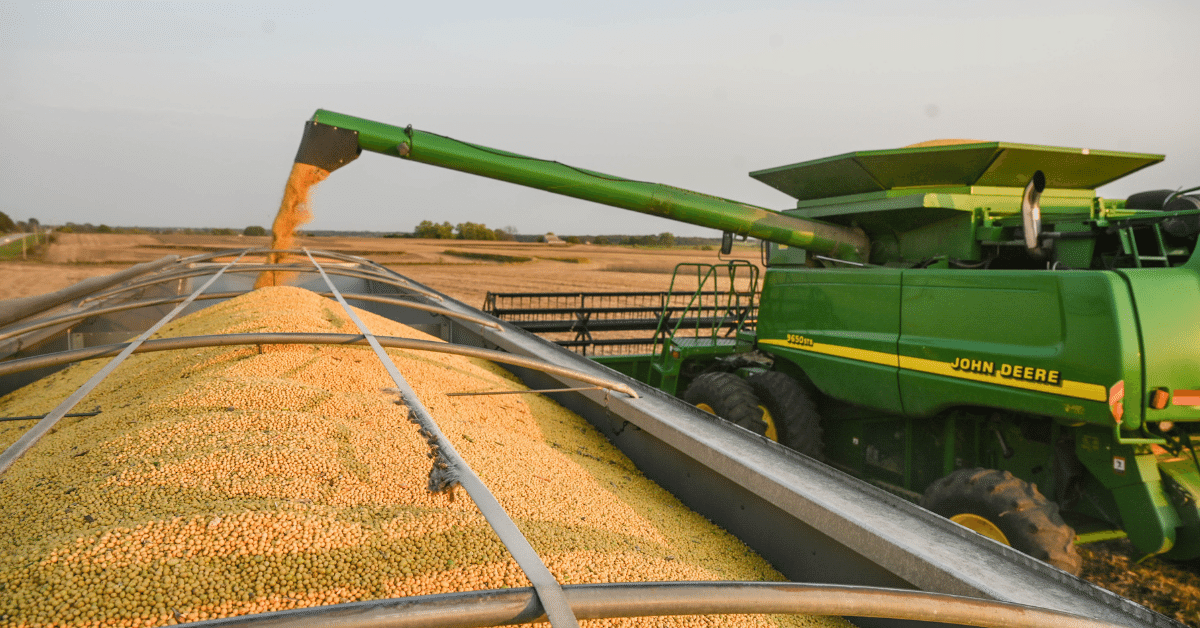
Bill Shipley, ISA District 7 director, believes in the importance of getting to know U.S. soy customers to have a better idea of what they are looking for. (Joseph L. Murphy/Iowa Soybean Association)
Selling soybeans during a global pandemic
November 4, 2020 | Bethany Baratta
Almost immediately after an Iowa Soybean Association (ISA) delegation returned from its market development trip to Bangladesh and Pakistan, travel was grounded for more than six months due to COVID-19. But that hasn’t stopped ISA’s market development efforts.
In the absence of travel, ISA members stepped up to meet customers virtually.
ISA Past President Tim Bardole and ISA Board Member Robb Ewoldt greeted customers during the U.S. Soy Global Trade Exchange & Specialty Grains Conference, which was virtual this year. More than 800 customers attended the multiday event, which connected buyers worldwide with soybean growers and suppliers.
In coordination with soybean industry consultant, Peter Mishek, ISA members joined farmers from other soybean-producing states on weekly calls with customers around the world. It was an opportunity to connect farmers and buyers, despite not being able to step foot on the farm or in an office.
ISA District 3 Director Suzanne Shirbroun continues to connect with customers she met in the Philippines and Myanmar in March 2019 through her farm’s Facebook page.
Shirbroun relies on her checkoff dollars to expand trade opportunities in countries where she can’t make a personal connection, especially this year. Soybean checkoff investments support the efforts of representatives for the U.S. Soybean Export Council (USSEC), which builds a preference for U.S. soy in offices throughout the world.
ISA also invests in the U.S. Meat Export Federation (USMEF) and the USA Poultry and Egg Export Council (USAPEEC), which grow markets for U.S. ag goods utilizing U.S. soy products.
“The money we put toward USSEC, USMEF and USAPEEC works to our benefit,” says Shirbroun, who farms in Farmersburg. “I see these individuals in the country as my salesmen. We can’t be there, so we have these people doing the job for us.”
ISA continues to work with Omaha-based Ag Processing, Inc. (AGP), the largest cooperative soybean processing company in the world, to grow markets worldwide. AGP delivers commodities like soybeans to numerous countries by way of bulk vessel, container or railroad. It serves as the conduit between farmers and buyers with six locations in Iowa, with agents in various countries working to grow markets for U.S. soybeans.
The partnership with AGP and other Midwest states to build export opportunities remains critically important, says Kirk Leeds, ISA CEO.
Though ISA members have embraced technology to be a part of various opportunities amid COVID-19, ISA District 7 Director Bill Shipley says it can’t fully replace face-to-face interactions or experiences like the one he had in Indonesia. It was the first time he tried tempeh. The soy-based food product was fried, offered with various sauces and served at a dinner event during a market development trip there.
That experience made Shipley think about soybeans as more than just feed for livestock, but as food for people worldwide. It was also there where Shipley formed relationships with end users, with whom he now exchanges emails.
Shipley says his experience hosting delegations from various countries has provided insight on what his customers are looking for in U.S. soy products.
“We have to cultivate relationships with people in markets all around the world,” Shipley says. “We can’t turn our back on a market, even though a breakthrough in the market may seem impossible sometimes; maybe that relationship will pay off in five or 10 years down the road.”
Farmers can’t control when travel restrictions are lifted. Still, ISA District 1 Director Chuck White says they can continue to produce the highest quality soybeans possible – whether it’s for livestock feed or tempeh.
“As Iowa farmers, we’re driven to deliver a high-quality product that’s sustainable around the world.”
This story was originally published in the November 2020 issue of the Iowa Soybean Review.
Back